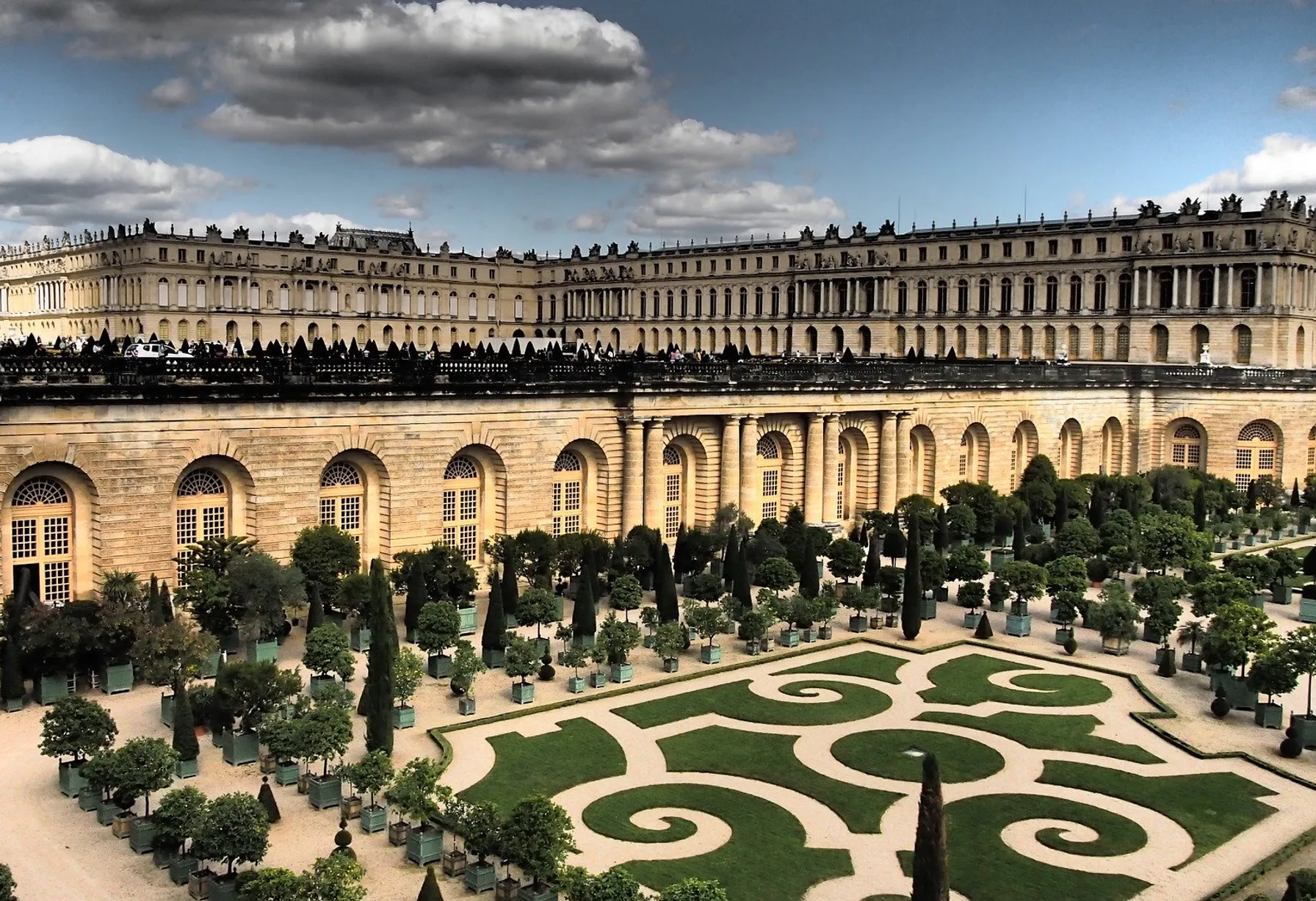Why visit Versailles and attend the Grandes Eaux?

Discover the Grandes Eaux Nocturnes.
You will be amazed by these gushing waters, the stunning light shows, the works of Lully …
The Gardens of Versailles and Their Fountains.
When Louis XIV walked through his gardens, the 600 water features, 150 fountains, and water ballets sprang into action. Suffice it to say that this expertise, rich with 350 years of experience, is showcased during the enchanting promenade of the Great Night Fountains of Versailles. Imagine that each fountain still has today its lyre key named after it to open the sluices! At the time, the skills of the Francini brothers were employed, who had been summoned by Henri IV to Saint Germain-en-Laye to create his automata. In Versailles, they competed in inventiveness: jets, sprays, sheets, or curtains of water... The greatest challenge they faced was the transport of water! Thanks to the Marly machine, it is pumped from the Seine and led to the reservoirs. The walk, lasting 2 hours and 30 minutes, constitutes an incredible water and light display... and it is topped off with fireworks!
When Louis XIV wandered through his gardens, the 600 water features, 150 fountains, and water ballets sprang into action.
The Grand Perspective.
The journey starts from the Grande Perspective, this East-West axis of symmetry that unfolds from the central window of the Hall of Mirrors and leads to the Water Parterre. The statuary, pools, and vegetation are elegantly illuminated. Soon you reach the Latona Fountain, which rises like a pyramid of marble. It is inspired by the metamorphosis of Ovid and has recently been restored. Like many elements of the gardens designed by Lenôtre, the version we see was later modified by Hardouin-Mansart. Just as Lenôtre was an epicurean gardener, his successor Mansart was an architect who served the monarch at the peak of his military glory.
The Green Carpet and the Mirror Pool.
Then you will leave behind the Green Carpet or royal alley, a sloping lawn parterre bordered by chestnut trees, arbours, or yews adhering to the art of topiary. Remember, it is the technique of sculpting which involves shaping plants into geometric or animal forms. Under the effect of dynamically orchestrated lighting, the shrubs ignite, creating a dynamic spectacle. You will then proceed to the Ballroom Grove—a green amphitheater equipped with an 8-tiered waterfall adorned with shell decor. There, you can attempt a few dance steps in the light of a thousand candles, just as they were illuminated back in the day...
Now you will leave the mirror pool which forms a reservoir and its 5 water jets, the external ones that respond to them in rhythm. You will then make your way to the Colonnade grove, a set of 32 Ionic columns in Carrara marble whose immaculate whiteness stands out particularly. At the center stands a sculpture representing an abduction, but whom does Pluto abduct? In the time of Mansart, concerts were held there. Look up to see the water cascading down from the peristyle and the arches tinted with shimmering colors!
Grove of Enceladus and the 3 Fountains.
You will then leave from the Grove of Enceladus, a fountain surrounded by trellis pavilions. Enceladus corresponds to one of the Greek Giants buried in Sicily. The eruptions of Mount Etna were attributed to his breathing! You will then reach the grove of Apollo's baths created under the instigation of Madame de Montespan. In the image of Apollo surrounded by his nymphs, illustrating the 5 senses and mastery over the world, one must see the allegory of the Sun King. According to Jean de La Fontaine or Charles Perrault, Louis XIV came to rest from the world inside the artificial Grotto of Tethys, lined with sculptures and shells reminiscent of the paintings of Arcimboldo.
Next comes the grove of the 3 fountains referred to as the " king's thought " composed of 3 basins. The upper basin activates a column of water and its 40 jets, the center one a water vault, and the lower one jets forming a fleur-de-lis! This leads you to the water theater of Othoniel. The Murano glass sculpture, intertwined with serpentine patterns since 2015, replicates a ballet above the water. You know this artist, creator of the arbor that tops the metro entrance in front of the French Comedy !
The Neptune Basin.
You will also admire the Neptune Basin with its breathtaking scenography. The largest of the basins with its 99 jets was a hydraulic feat. Moreover, it already drew the admiration of foreign ambassadors visiting Versailles. It features a marine decor made of lead, notably showing Neptune holding the trident alongside his spouse Amphitrite. Already you can hear the first rockets, the pyrotechnic show launched from the Grande Esplanade has begun...
On Saturday evenings, you can purchase a combined ticket with the Royal Serenade in the Hall of Mirrors, which will give you access to the grand apartments that you will see differently… Indeed, Baroque dancers and musicians will show you the Vestibule of the Royal Chapel, the Hercules Salon, or the Hall of Mirrors. Short skits depicting episodes that took place at Versailles such as the visit of the Turkish sultana will be performed for you. You will even get to see sword duels !
The largest basin with its 99 jets represented a hydraulic feat.